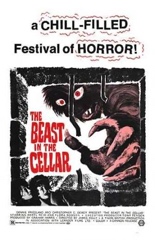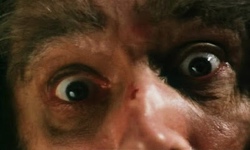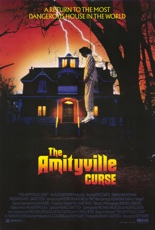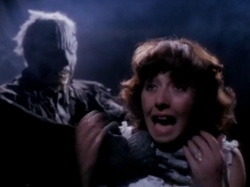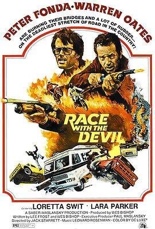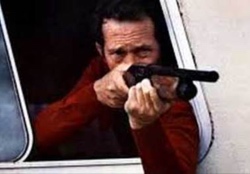
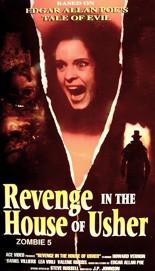 Right away, Revenge in the House of Usher renders itself suspect due to three things:
Right away, Revenge in the House of Usher renders itself suspect due to three things:
• referring to its source material, an Edgar Allan Poe short story of about two dozen pages, as a “novel”
• misspelling that legendary author’s name as “Edgard Allan Poë”
• being written and directed by Jess Franco
Book ’em, Dano.
With characters named Harker and Seward — not to mention the film’s theme of blood transfusions — Revenge makes one wonder if Bram Stoker deserved Poe’s credit. Both authors’ bibliographies rest in the public domain, so either fits the typical Franco budget.
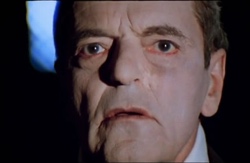 Franco fave Howard Vernon (The Erotic Rites of Frankenstein) is Dr. Eric Usher, who invites his favorite med student, the aforementioned Harker (Robert Foster, Franco’s Night of Open Sex), to come hang at his cool castle. Old, crazed and near death — basically, Dennis Hopper in Hoosiers — Usher asks Harker to continue keeping Usher’s reanimated daughter (Françoise Blanchard, The Living Dead Girl) alive with fresh blood transfusions. As Usher confesses to his mentee, he’s killed many women — but, hey, it was “for science,” so all’s good, right?
Franco fave Howard Vernon (The Erotic Rites of Frankenstein) is Dr. Eric Usher, who invites his favorite med student, the aforementioned Harker (Robert Foster, Franco’s Night of Open Sex), to come hang at his cool castle. Old, crazed and near death — basically, Dennis Hopper in Hoosiers — Usher asks Harker to continue keeping Usher’s reanimated daughter (Françoise Blanchard, The Living Dead Girl) alive with fresh blood transfusions. As Usher confesses to his mentee, he’s killed many women — but, hey, it was “for science,” so all’s good, right?
As Usher spills his secrets, Franco cannily fills the running time and fortifies his bottom line by reusing footage of Vernon as the title character of The Awful Dr. Orlof, the filmmaker’s black-and-white breakthrough from 1962. Thrifty! And those scenes make up the only good parts of Revenge in the House of Usher — which is weird, considering this flick has an assistant with one comically large eye, not to mention Lina Romay Lina Romaying herself all over the place.
It may be impossible to overstate how boring this movie is, with a story that crawls at the pace of a snail — one that’s been showered in salt. Unofficial though it may be, the Orloff franchise has its ups and downs. This one is the below the basement, more Eurosnorer than Euroshocker. —Rod Lott




